If you love to sew your own clothes, you’ve definitely come across and used commercial sewing patterns at some point, but did you know that those patterns originate from blocks or slopers?
And those blocks and slopers are created using a technique called pattern drafting.
Note: Some of the links in this post are affiliate links, which means I may receive a commission if you make a purchase at no further cost to you.
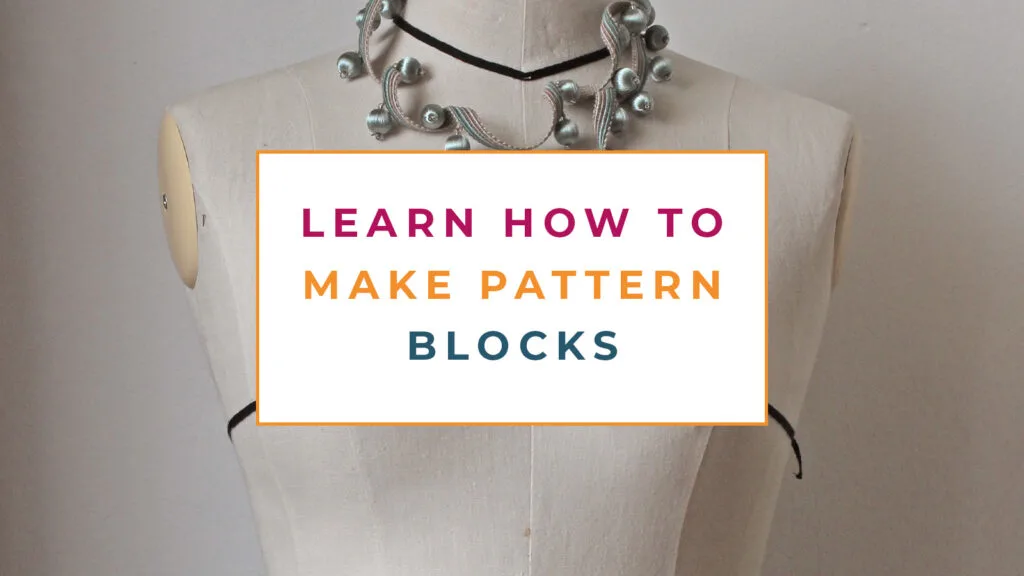
What Is Pattern Drafting?
Pattern drafting is a pattern making process using the measurements of different body areas to create basic patterns – or blueprints if you like – of essential pattern blocks – this is often referred to as a pattern set:
- Bodice front
- Bodice back
- Sleeve
- Skirt front
- Skirt back
- Trouser front
- Trouser back
The above are the seven basic patterns needed to create all the different types of clothes including:
- Tops
- Shirts
- Skirts
- Shorts
- Trousers
- Dresses
- Jackets
- Coats
What Are The Types Of Pattern Drafting?
This question is an anomaly because there is only one way of drafting a pattern, and that is by using specific body measurements or a set of generic size measurements.
There are of course other ways to make pattern blocks and I cover those in this tutorial on the five ways to make sewing patterns.
You can also learn more about the difference between pattern drafting, pattern making, draping and contouring here.
Pattern Drafting Tools
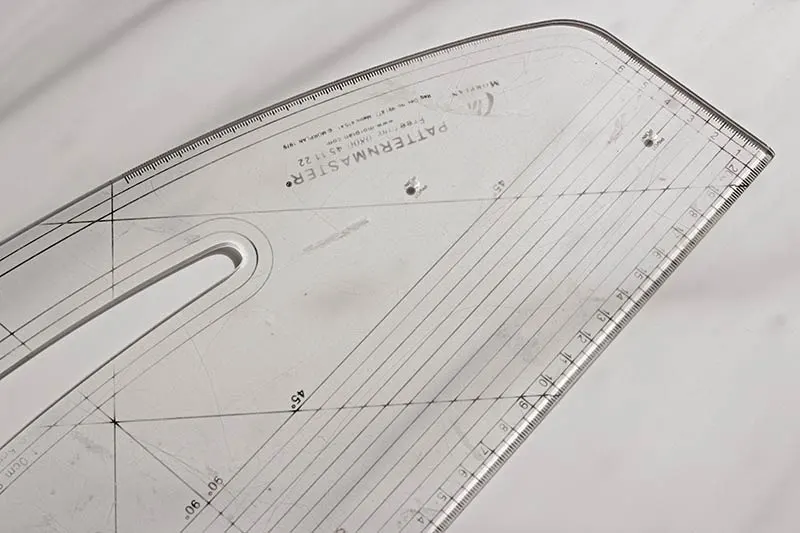
When learning to draft patterns, you’ll need a basic set of pattern making tools. This list will help, but at the very minimum you’ll need:
- A hard pencil
- A pattern master or ruler and set square
- Tape measure
- Pattern paper (more see through than regular paper)
Drafting Your Own Patterns
If you’re eager to start drafting your own patterns, then you’ll want to find someone to help you take some important measurements.
Below are checklists of the measurements needed when drafting patterns. I recommend keeping them all together in a dedicated notebook.
Measurements For Drafting A Bodice Block / Sloper
- Bust
- Waist
- Back width
- Chest width
- Centre back length
- Shoulder
- Top arm
Measurements For Drafting A Sleeve Block / Sloper
- Top arm
- Arm length
- Elbow length
- Elbow width
- Wrist circumference
Measurements For Drafting A Skirt Block / Sloper
- Hip
- Waist
- Waist to hip
- Finished length
Measurements For Drafting A Trouser Block / Sloper
- Waist
- Hip
- Waist to hip
- Body rise
- Waist to floor
Ok, you’re now ready to learn to draft sewing patterns for yourself!
How Do You Draft A Basic Pattern?
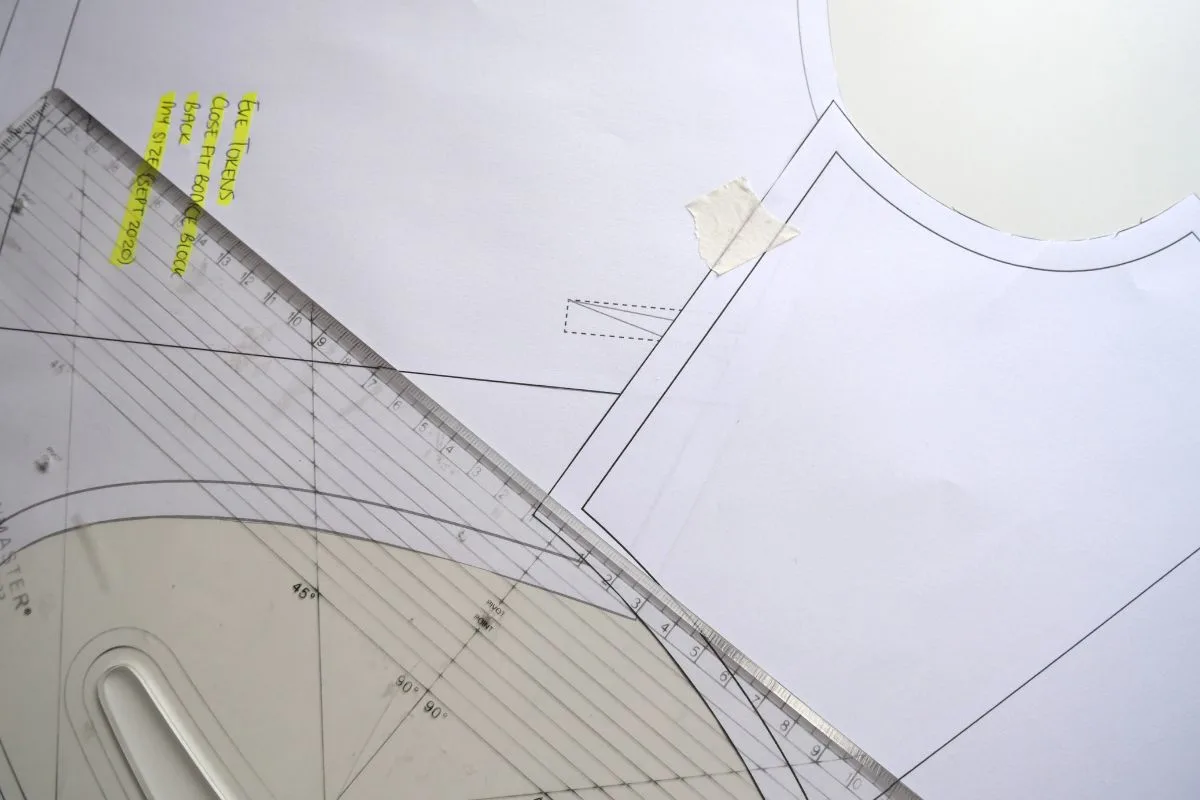
The pattern drafting tutorials and resources listed below will help you on your journey as a beginner. And of course, you can also ask any additional questions in the comments further below!
How To Make A Skirt Pattern
This is an easy to follow step by step tutorial on drafting a skirt block using your own measurements.
Once the skirt block is created, and you’ve tested the fit with a toile, you’ll be able to develop the block into many basic patterns:
- A-line
- Gored
- Bubble
- Skater
If you’re not sure about which skirts to create sewing patterns for, this guide to the different types of skirts will help inspire you!
Draft A Basic Pant / Trouser Block
This one is a tad more complex, but my very detailed tutorial on how to draft a pants pattern will get you started properly.
Draft A Female Bodice Block
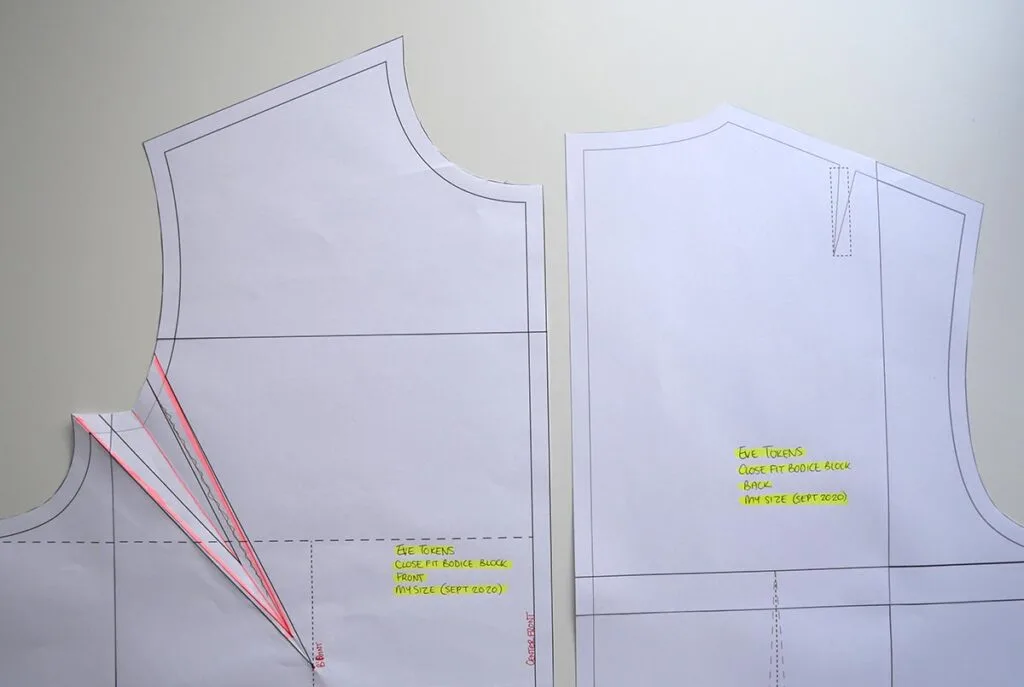
A great tutorial on how to draft a female bodice block is essential for success when pattern drafting, and the tutorial I created is exactly that.
It’s another step by step tutorial, so take your time and follow the instructions carefully!
Once completed, check the toile, make any necessary changes to the block for fit, and then you’re all set to design many different types of patterns for yourself from it!
Draft A Sleeve Block
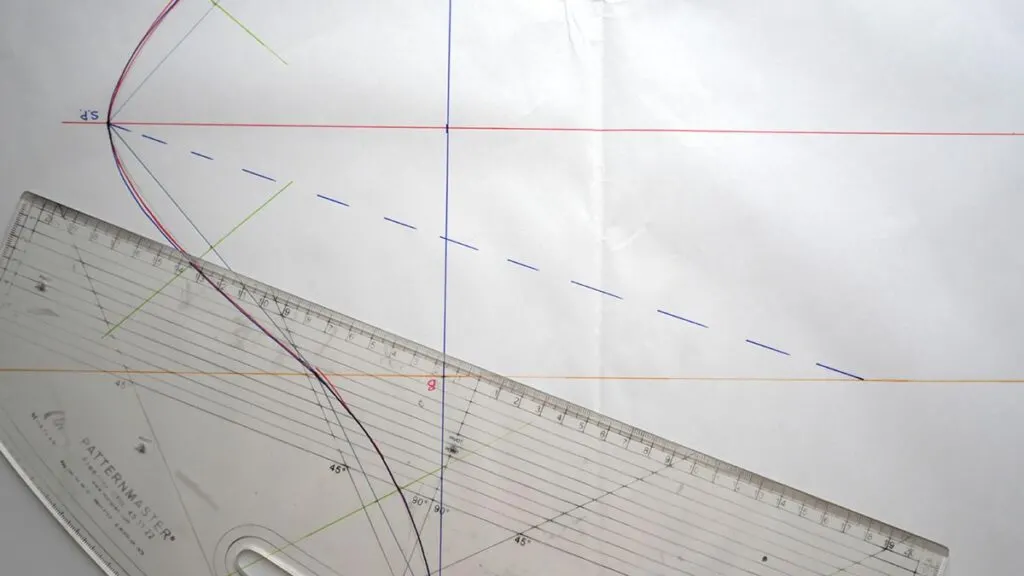
Now that you have the bodice front and back drafted, you need a sleeve block to go with it!
Drafting a sleeve that matches the basic bodice block will open up lots of different design possibilities for you.
This tutorial on how to draft a sleeve block will walk you through the entire pattern drafting process and then this post on the different types of sleeves can be used for more inspiration.
Pattern Drafting Books
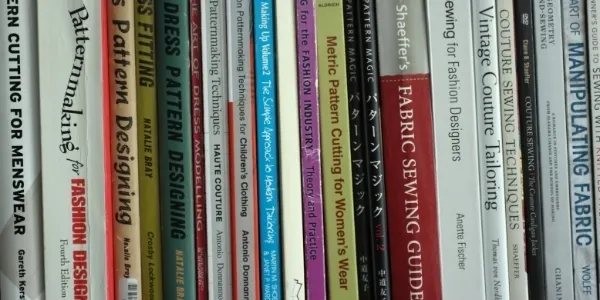
If you feel like you need additional help, there are some great books to help you draft basic patterns:
- Natalie Bray’s Dress Pattern Designing is an oldie but goodie. Don’t be deceived by the title, it’s quite a comprehensive (if old fashioned) book on pattern drafting!
- Anything from Winifred Aldrich is a winner! She has published many books but the ones I have or have used when drafting patterns are:
- And finally my all time favorite book that I used as a tool to learn to draft sewing patterns was Patternmaking for Fashion Design by Helen Joseph Armstrong!
There are many more books on pattern drafting, but the ones listed above are the ones I started out using years ago. I also have this page on the best pattern making books which covers different pattern drafting and pattern making books for all levels.
Drafting Patterns
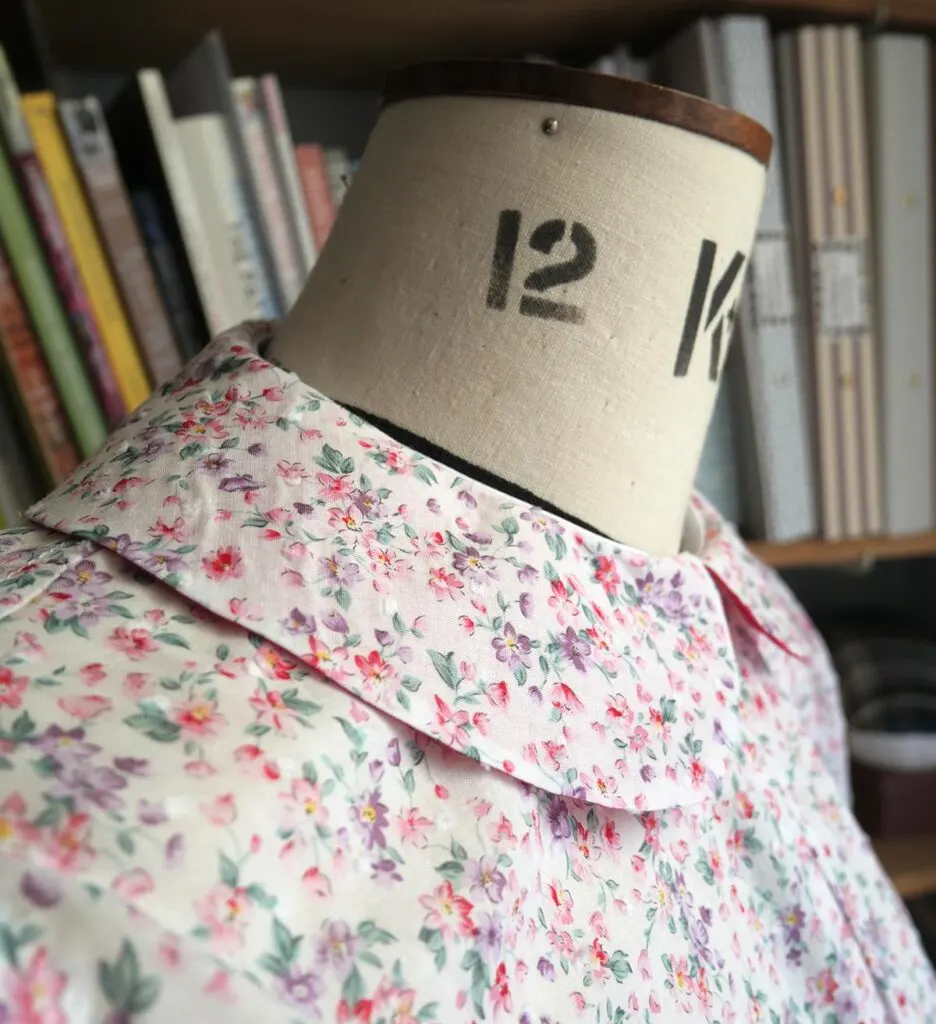
Once you’ve gotten the hang of drafting a pattern using measurements, you’ll be in a better position to draft other types of patterns like:
Each of the above requires the basics blocks (or commercial sewing patterns) for you to develop the patterns from.
Drafting Patterns To Sell As Commercial Sewing Patterns
If you’ve been making patterns for a while, and want to move from self drafting to design and selling sewing patterns, you might enjoy this guide on developing a sewing pattern design to sell!
You can also check out my online pattern making courses and workshops here to learn more, and I also have this great collection of pattern making tutorials here.

Temi
Saturday 20th of April 2019
I would like to join your pattern class too. I don't really know much about pattern drafting . I really want to learn
Alicia
Thursday 11th of April 2019
Hi Eve! I started sewing my daughter Folklorico dancing full circle skirts but I can’t make the blouse special the sleeves in this new version video do you show how or what do you recommend. Love your full circle instructional Thank you.
Ronke
Thursday 14th of February 2019
I love sewing and get so much joy in my customers satisfaction. I'm more I to flat cutting, I have a bit of thing in pattern making though but I'll definitely welcome an indept knowledge of it. How easy is it to pay for Your training from Nigeria?
Eve Tokens
Sunday 3rd of March 2019
Hi Ronke! Thanks so much for your comment! I too love flat pattern making, though I sometimes think draping is my favourite way to make patterns! :) Currently my trainings are closed, but stay tuned for when they reopen, I have many students from Nigeria that have joined previously!
Alison Owen
Wednesday 12th of December 2018
Hi Eve I love sewing but don’t know how to correctly place fabric onto pattern pieces so that the garment hangs properly. Is this aspect covered in the course? Thanks. Alison
Eve Tokens
Sunday 3rd of March 2019
Hi Alison! Thanks for your comment! That aspect is not covered in the course, but would actually make a great blog post tutorial! I'll add it to my content ideas list and will try to get it written and posted ASAP! Thanks again for popping by!
Nwaka Dorothy Okafo
Tuesday 23rd of October 2018
Hey am nwaka. I live in Nigeria and I love sewing. I can only sew with patterns but in Nigeria you have learn how to work on the fabric and cut and sew immediately which is faster since you need more clients. How can I work straight from the fabric without making patterns always. Also how do I pay online from Nigeria for your courses.
Eve Tokens
Friday 26th of October 2018
Hi Nwaka! Thanks for your comment! The great thing about creating a block for a client is that you can then use it again and again as a base pattern. This is something you cannot do if you work directly on the fabric. What I would recommend is draping a block instead. Use some nice solid weight calico, apply the straight grain to the centre front of your client, and then pin in place around her body to create the bodice front. Repeat for the back. Remove from the client's body and trace onto pattern paper. Once it is all trued up, transfer to card, and use as your basic pattern. This can then be placed on fabric directly, knowing that it is a good fit for your client, that perhaps only requires minor changes for fit if her body changes. Hope this helps! IN terms of paying for courses. As they are part of my members area, I am only able to implement PayPal and debit/credit cards via Stripe. I'm aware that these do not currently work for many readers in Nigeria and am working to find a solution. Thanks for popping by Nwaka! Best, Eve